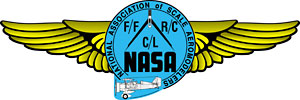Setting a Slow and Reliable Idle
by: Jim Bronowski
To start with, many idle problems with non-pump equipped engines can often be traced to an improperly positioned fuel tank or a fuel tank that is too far from the engine. The center-line of the fuel tank should never be any higher than the center-line of the fuel jet and preferably 1/4 to 3/8 inches below. This helps decrease the siphoning action with a full tank of fuel.
The make of the glow plug also plays an important role. Any older design, cross-flow scavenged (ported) two-stroke engine should use an idle bar glow plug. Most of the newer Schnuerle ported two-stroke engines do not require an idle bar plug, but if idle problems are experienced, an idle bar plug should be used. If you aren’t sure whether the engine is cross-flow or Schnuerle ported, just look into the exhaust. If there is a baffle on the far side of the piston, the engine is cross-flow ported. If there is no baffle, it is Schnuerle ported. Some engines do have better idle characteristics than others due to differences in porting, timing, compression ratio, etc.
When it comes to the actual adjustment, there are two basic methods. The first is to start with the fuel tank half full and the idle speed set in the 2,500-2,700 rpm range. This is where a good tachometer comes in handy and is something every toolbox should contain, not just for setting idle speed but for proper richening of the top end as well. Then, use the “pinch test” (i.e. pinch the fuel line). If the engine dies immediately, the idle mixture is too lean and needs to be opened in 1/8-inch increments. If the engine speeds up and the idle improves, the mixture is too rich and the adjustment should be turned in or leaned.
If the engine is cowled in and the fuel line to the carburetor is not easily accessible, with a tricycle gear ship, lower the tail. If the engine dies immediately, the mixture is too lean. If the idle improves, the mixture is too rich. Remember to always make any idle mixture adjustments in 1/8-turn increments—not one or two turns at a time.
With a tail-dragger, make the mixture adjustments with the tail raised to a level position, being careful not to go so high as to have the propeller hit the ground. Then, lower the tail following the same procedure as with the tricycle gear model.
For the final check, accelerate the engine to full throttle. If it slows and sags and has a weak sound, the mixture is too lean and needs richening. If the engine sputters and spits out a lot of smoke, the mixture is too rich and should be leaned.
After a satisfactory idle and acceleration have been established, you can try lowering the idle speed to the point where the engine will remain idle for a prolonged period with good acceleration to full throttle. Again, the idle speed should be set with a tachometer and not by ear.
Many cases of an engine dying at idle are simply because of pilots who try to idle the engine too slow. It is nice to watch an engine tick over at 1,800 rpm, but an idle speed in the 2,200-2,500 rpm range is more practical and reliable.
Also remember, the heavier the propeller and the larger the diameter, the better the flywheel action. Increased flywheel action is always beneficial to a slow and reliable idle.
